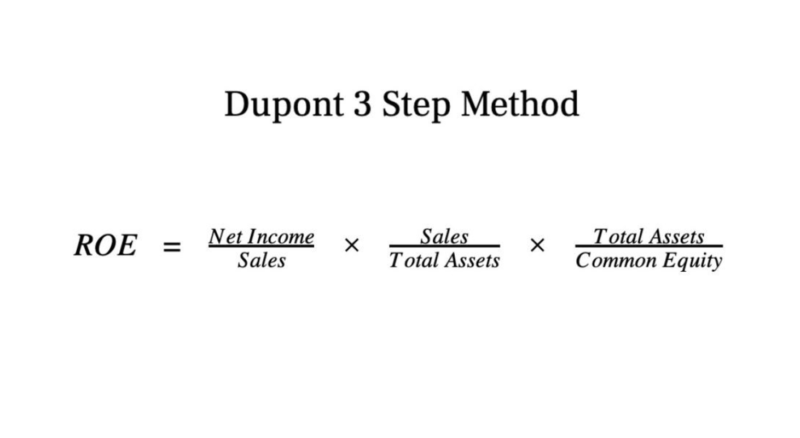
If they are still not equal, you will have to repeat the process of reconciliation. Deposits in transit are amounts that are received and recorded by the business but are not yet recorded by the bank. Nanonets goes beyond basic OCR by leveraging machine learning (ML) algorithms to extract specific entries, such as dates, purchase order numbers, and reference IDs, from a myriad of financial documents. With training, Nanonets achieves over 90% accuracy and can analyze thousands of documents in a fraction of the time. This accuracy and efficiency are essential in addressing the demands of modern audit processes, where large volumes of data need to be processed rapidly and accurately.
Why Is It Important To Reconcile Your Bank Statements?
- As a result, it is critical for you to reconcile your bank account within a few days of receiving your bank statement.
- It’s a core account reconciliation and a way to double-check that the money you think you have matches what’s in your company’s bank account.
- In these cases, contact your bank to correct these errors and adjust your cash book to reflect the correct balance.
- Solutions such as HighRadius’s cash management software can auto-reconcile transactions based on standard and user-defined tagging rules, saving time and reducing the risk of errors.
- The reconciliation statement should include an explanation for the bank/ledger difference.
- Financial accuracy is also important for ensuring that all payments have been fulfilled and orders have been completed.
Deposits in transit, or outstanding deposits, are not showcased in the bank statement on the reconciliation date. This is due to the time delay that occurs between the depositing of cash or a check and the crediting of it into your account. This is a simple data entry error that occurs when two digits are accidentally reversed (transposed) when posting a transaction. For example, you wrote a check for $32, but you recorded it as $23 in your accounting software.

Step three: Recording the reconciliation
Yet even the most detail-oriented reconciliation process can fall prey to the occasional error. Here’s how to check bank reconciliation in audits, including some best-practice tips to help you stay on track. The frequency of reconciling bank statements depends on the size and complexity of the business and its transaction volume. For larger companies with a high volume of transactions, it’s advisable to reconcile bank https://www.bookstime.com/articles/estimated-tax statements daily to ensure that any discrepancies or errors are promptly identified and corrected.. Theoretically, the transactions listed on a business’ bank statement should be identical to those that appear in the accounting records of the business, with matching ending cash balances on any given day.
- If there’s a discrepancy between your accounts and the bank’s records that you can’t explain any other way, it may be time to speak to someone at the bank.
- After adjustments are made, the book balance should equal the ending balance of the bank account.
- Failing to review these reports regularly can lead to errors in the reconciliation process.
- Once the adjusted balance of the cash book is worked out, then the bank reconciliation statement can be prepared.
- The county called the state auditor’s practices “substandard” and pointed to its failure to review a random sample of bank and financial statements.
- One such entity was the Coconino County Treasurer’s Office, which asked the state to randomly select three months of bank statements to audit.
- When they draw money from your account to pay for a business expense, they could take more than they record on the books.
What is Bank Reconciliation?

Apart from triple checking the balances on your statements, you’ll also need to comb through each document to confirm that individual transactions match up. Compare ledger entries to the bank account, ensuring each credit or debit is payroll reflected on both. When anything is missing or inconsistent, it should be noted on the reconciliation statement with an explanation.
- Once you’ve identified all the items that align between the two records, it’s time to account for any discrepancies.
- Common errors include entering an incorrect amount or omitting an amount from the bank statement.
- Bank reconciliation is the process that helps you ensure your company’s accounting records match your bank statements.
- They may not be fun, but when you do them on a regular basis you protect yourself from all kinds of pitfalls, like overdrawing money and becoming a victim of fraud.
The final balance on the bank reconciliation statement, after all corrections and adjustments, is the actual “true” cash balance reported in the company’s balance sheet. Notice that there are no journal entries posted for the bank statement adjustments (Step 1) because those are only used in the reconciliation process to calculate at the “correct” adjusted cash balance. The reconciled and adjusted cash book balance is reported in a company’s financial statements. You only need to reconcile bank statements if you use the accrual method of accounting.
The current panorama of travel expense management
This includes everything from wages and salaries paid to employees to business purchases like equipment and materials. Bank statements also show expenses that may not have been included in financial statements, such as bank fees for account services. The more frequently you do a bank reconciliation, the easier it is to catch any errors. Many companies may choose to do additional bank reconciliations in situations that involve large sums of money or that show unusual financial activity. This can include large payments and deposits or notifications of suspicious activity from your bank. In these situations, it’s a good idea to perform bank reconciliation an immediate reconciliation.

Bank account reconciliation compares the financial data in a company’s internal accounting books (e.g., the General Ledger) with the data in its bank statement. This process ensures the integrity of financial data and confirms that the reported financial position is accurate. Bank reconciliation typically involves gathering bank statements and transaction records, comparing them with the corresponding entries in the company’s accounting records, and investigating any discrepancies. Through this meticulous process, businesses can mitigate the risk of errors, fraud, and legal complications, thus safeguarding their financial health and compliance. Companies prepare bank reconciliation statements as a comprehensive accounting comparison tool.
Using cloud accounting software, like Quickbooks, makes preparing a reconciliation statement easy. Because your bank account gets integrated with your online accounting software, all your bank transactions will get updated automatically and each item will be matched with your books of accounts. While reconciling your books of accounts with the bank statements at the end of the accounting period, you might observe certain differences between bank statements and ledger accounts. If this occurs, you simply need to make a note indicating the reasons for the discrepancy between your bank statement and cash book. Typically, the difference between the cash book and passbook balance arises due to the items that appear only in the passbook. So it makes sense to record these items in the cash book first in order to determine the adjusted balance of the cash book.
This entry was posted on Четверг, 25 января, 2024 at 18:22
You can follow any responses to this entry through the RSS 2.0 feed.
Posted in: Bookkeeping
